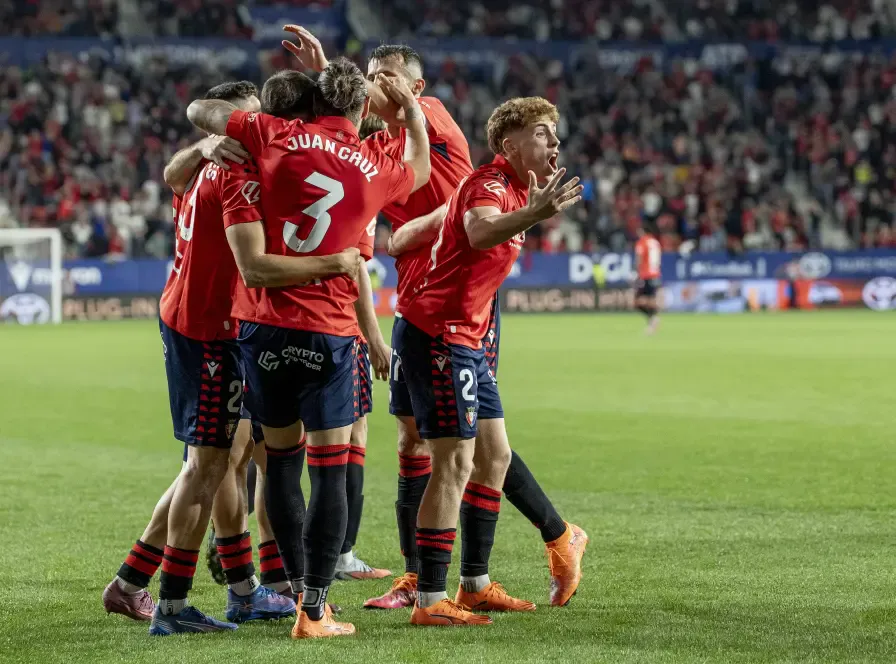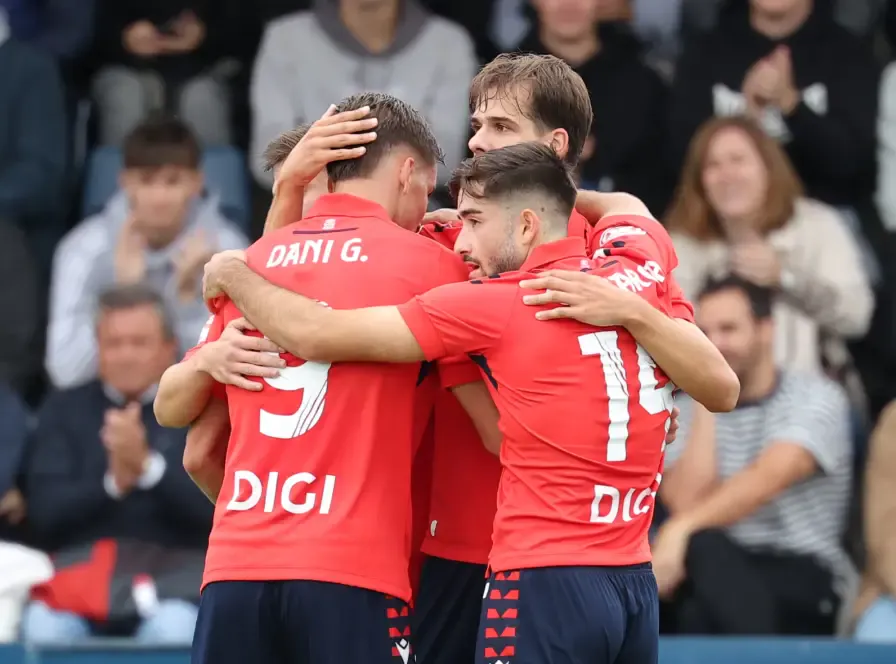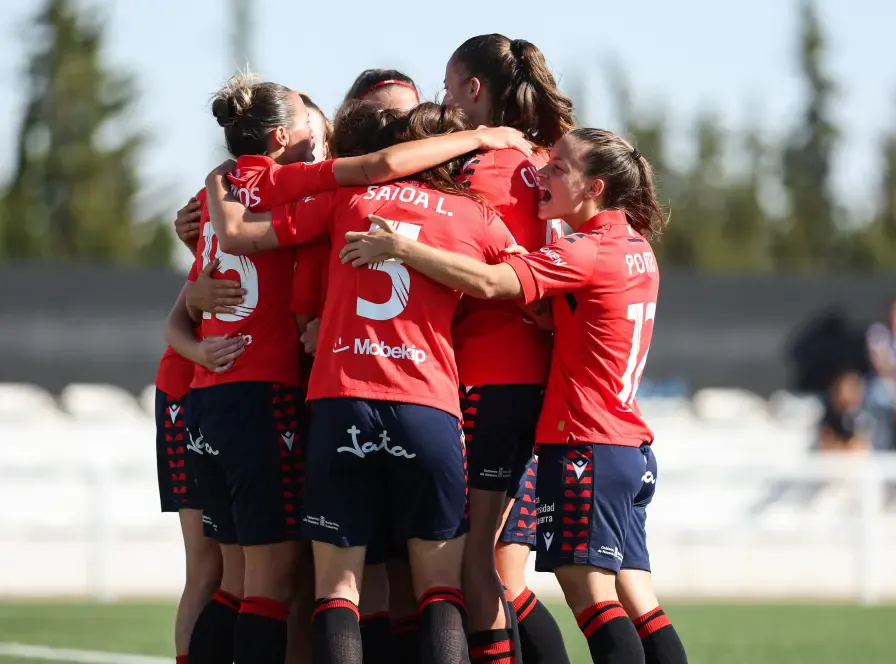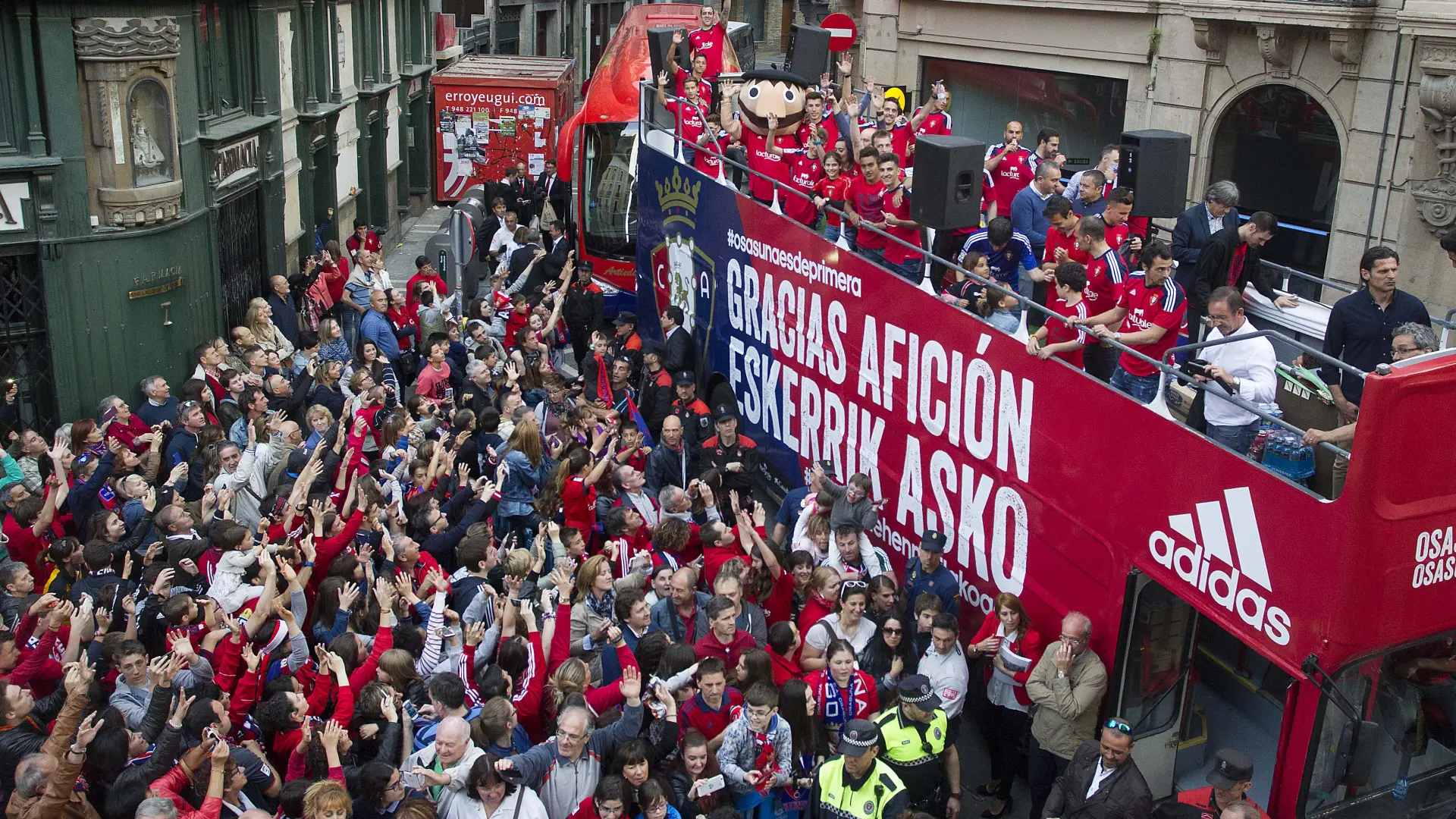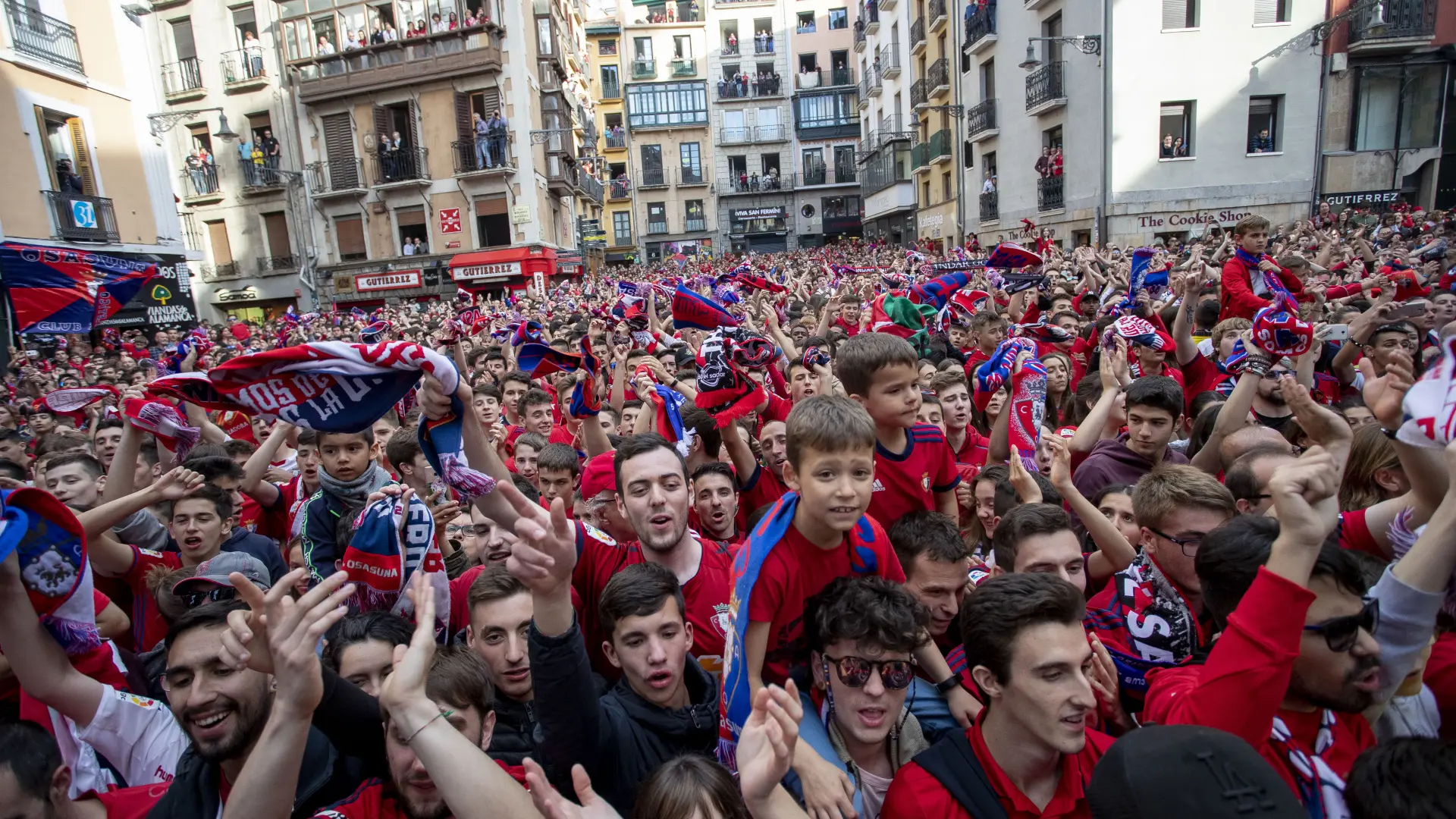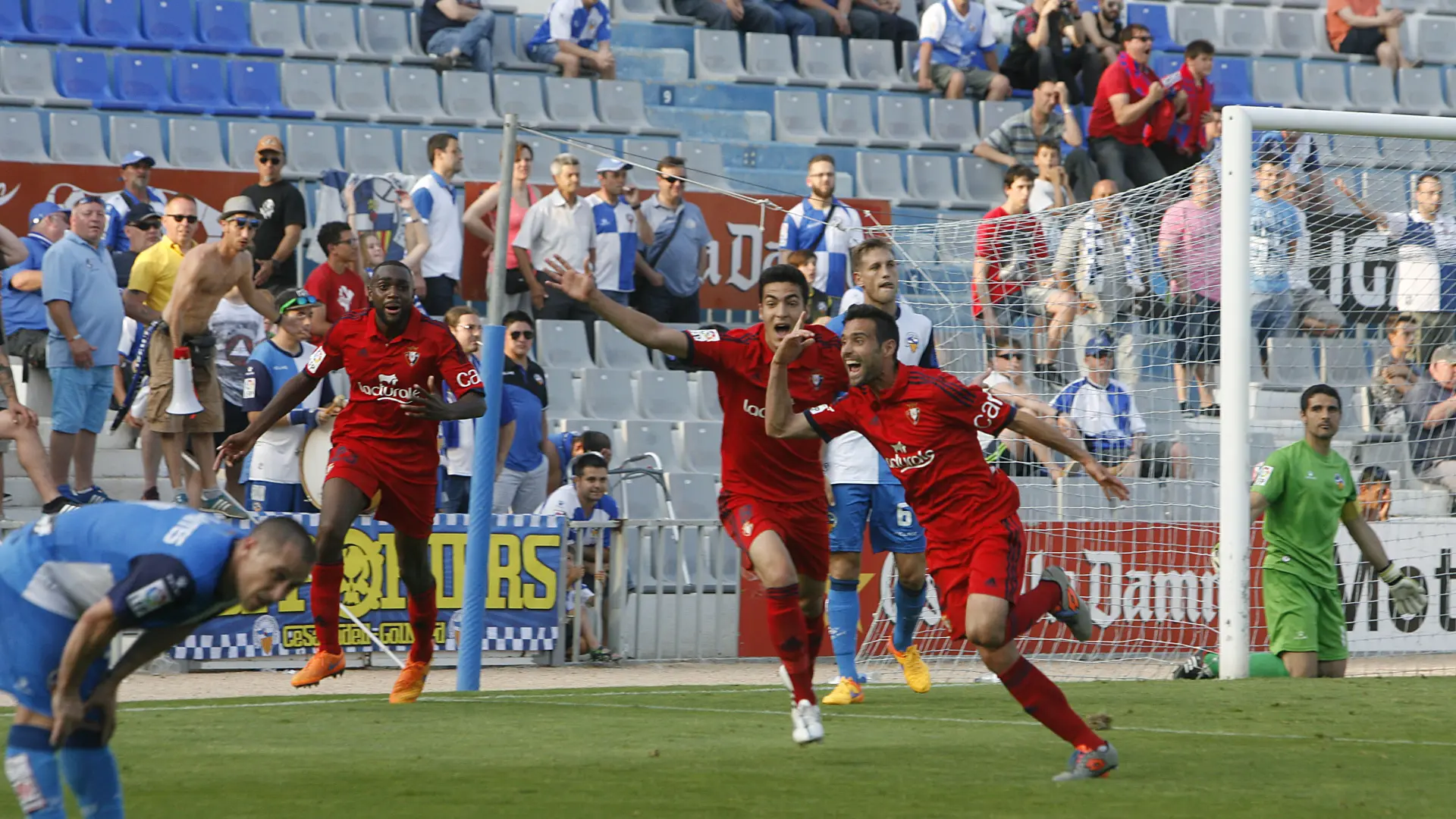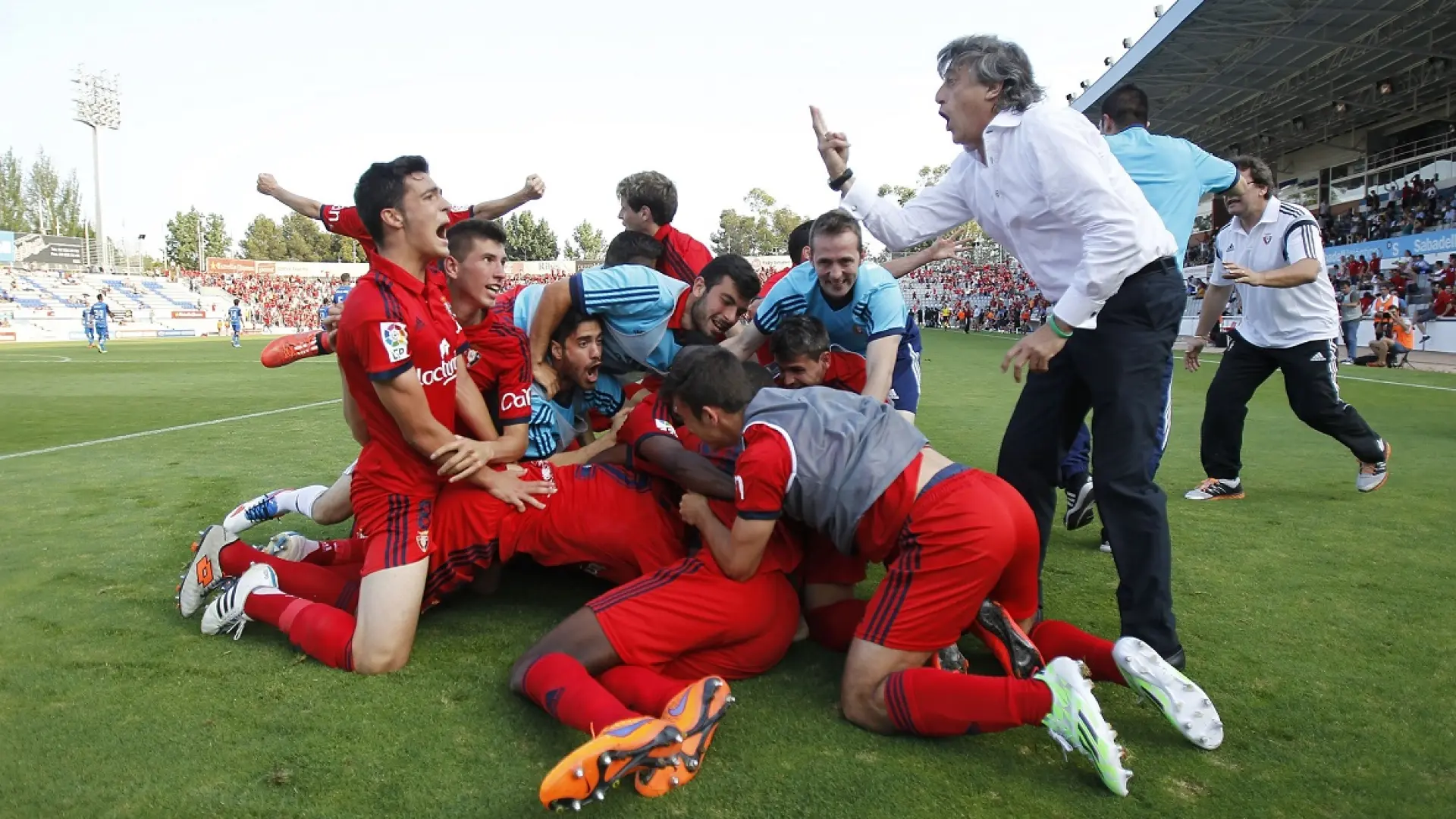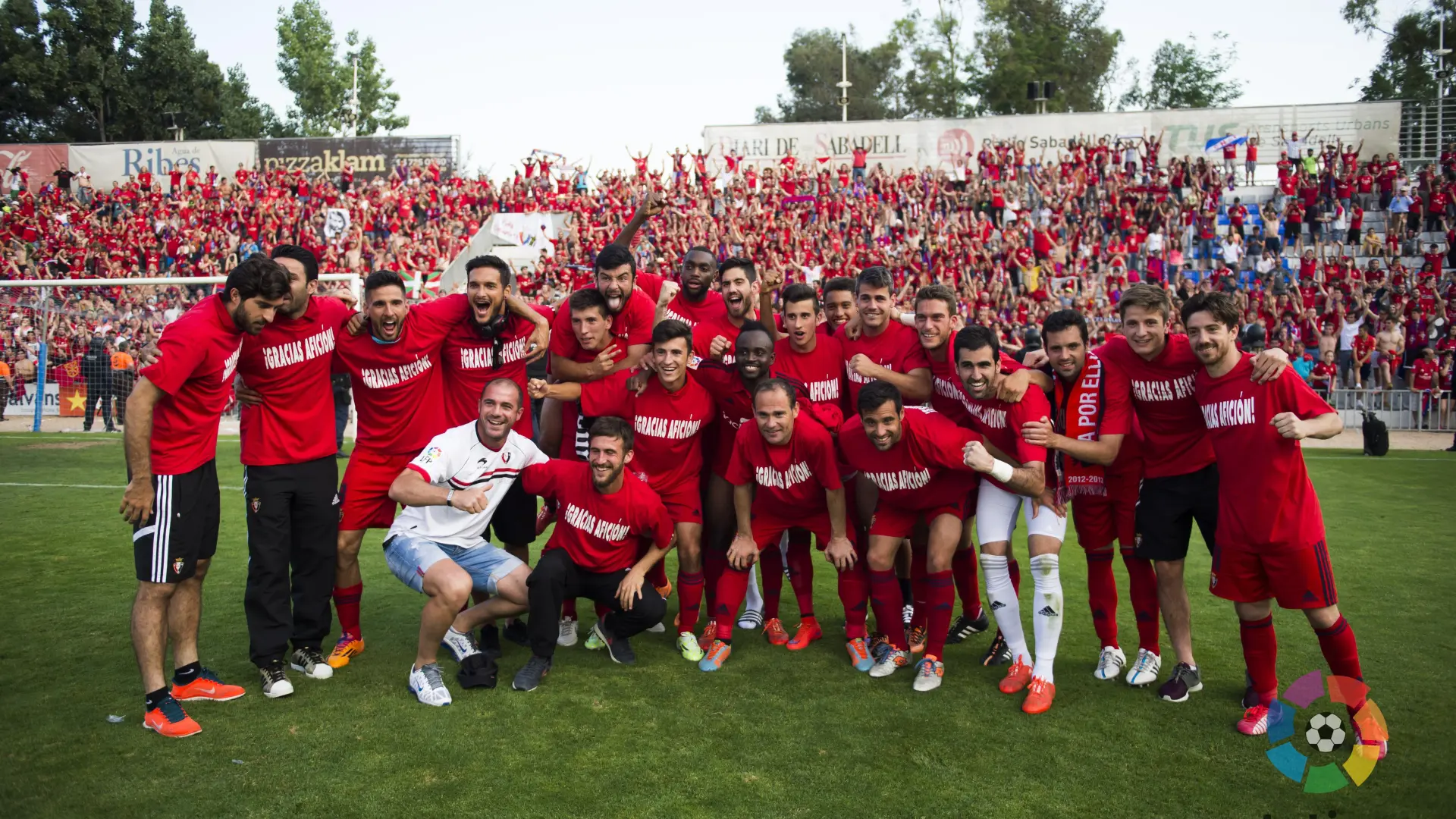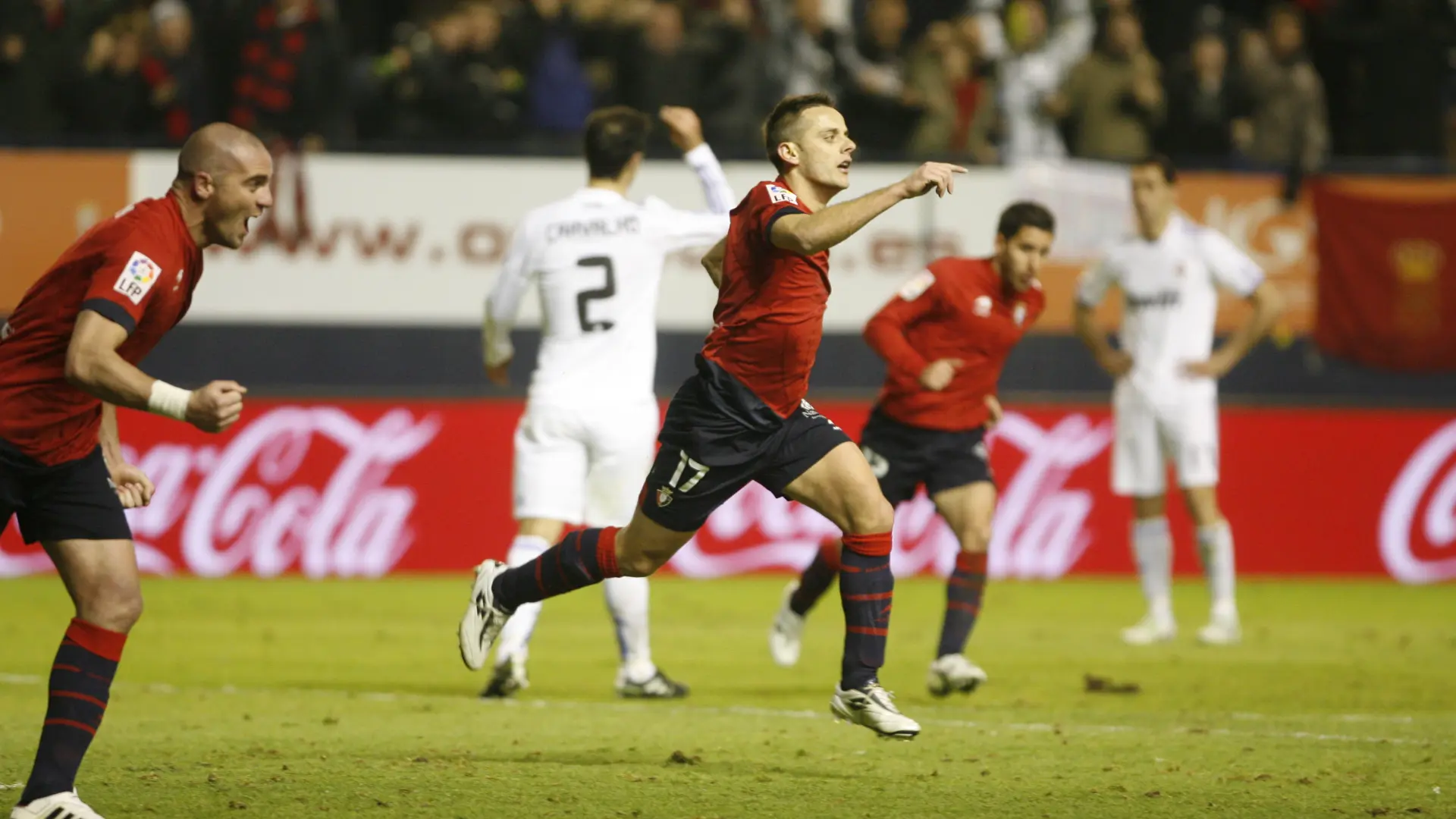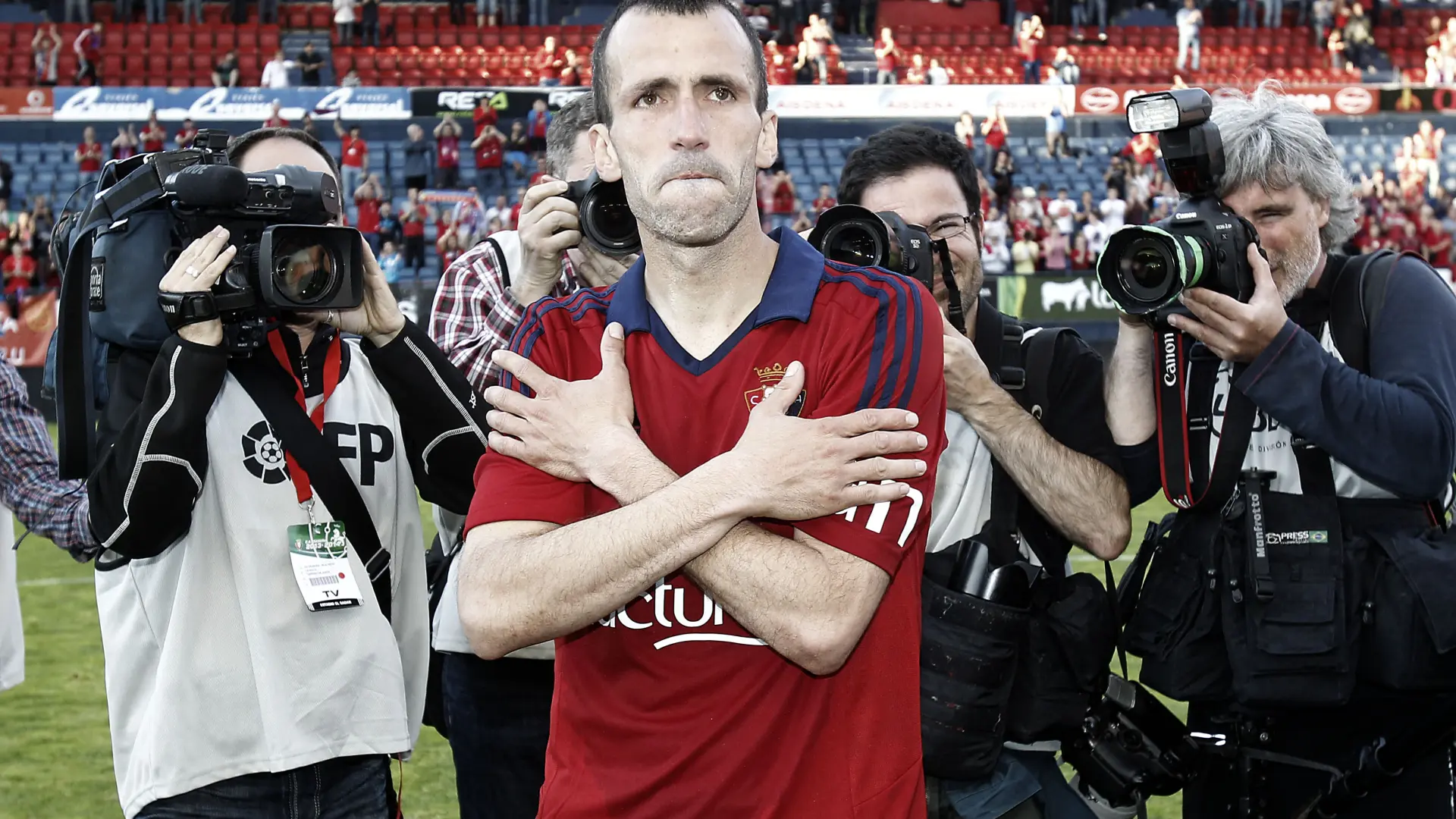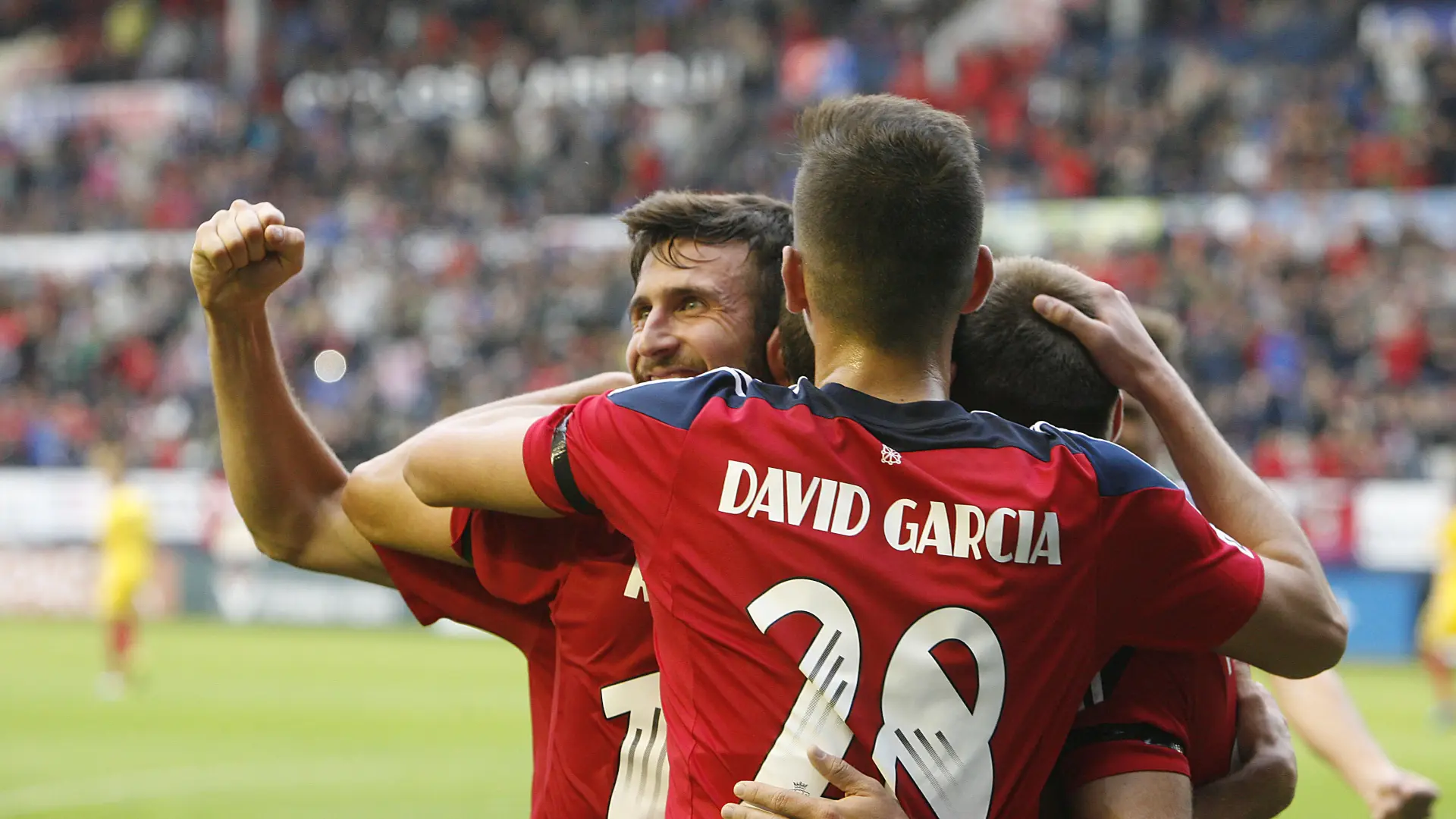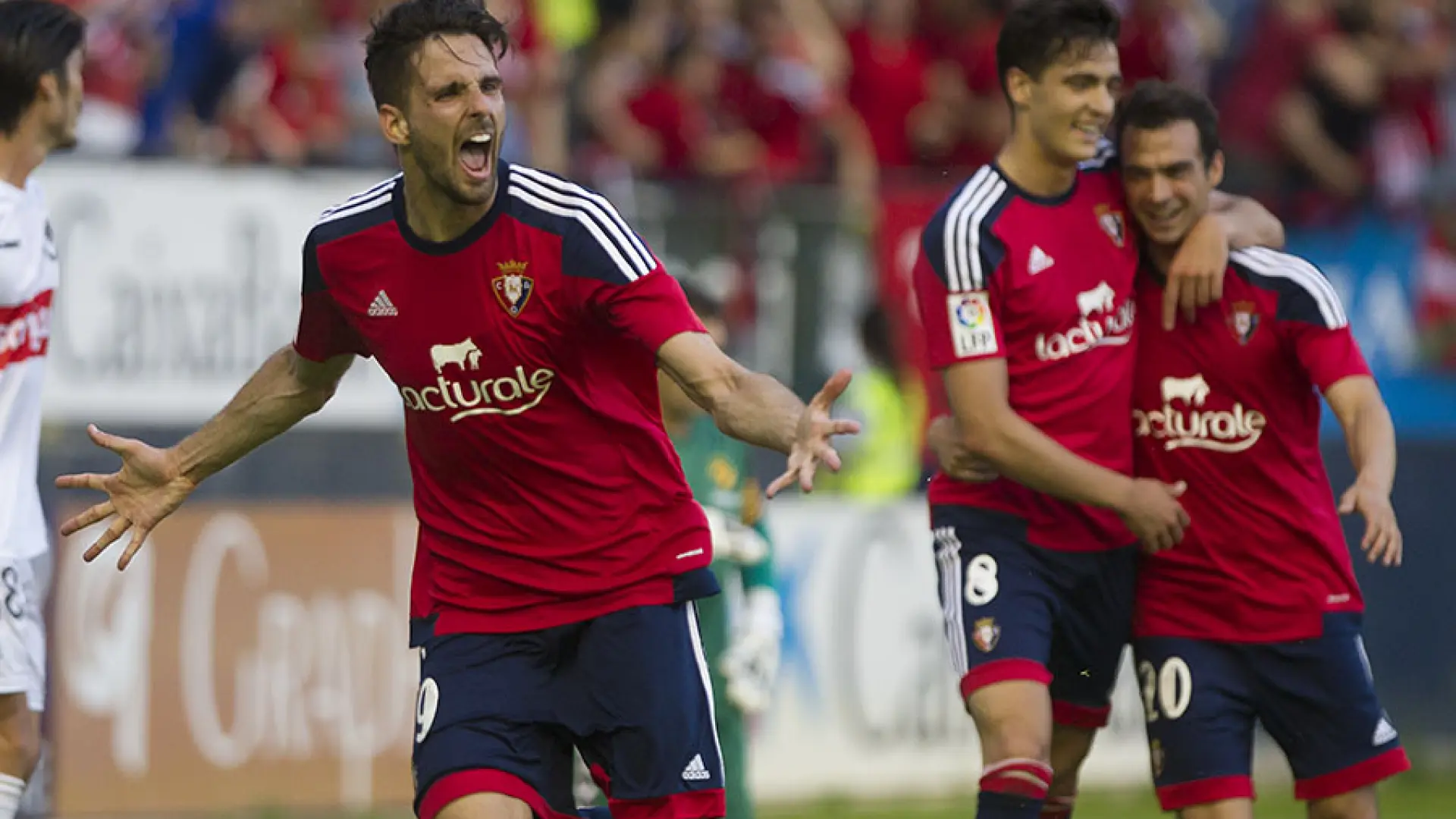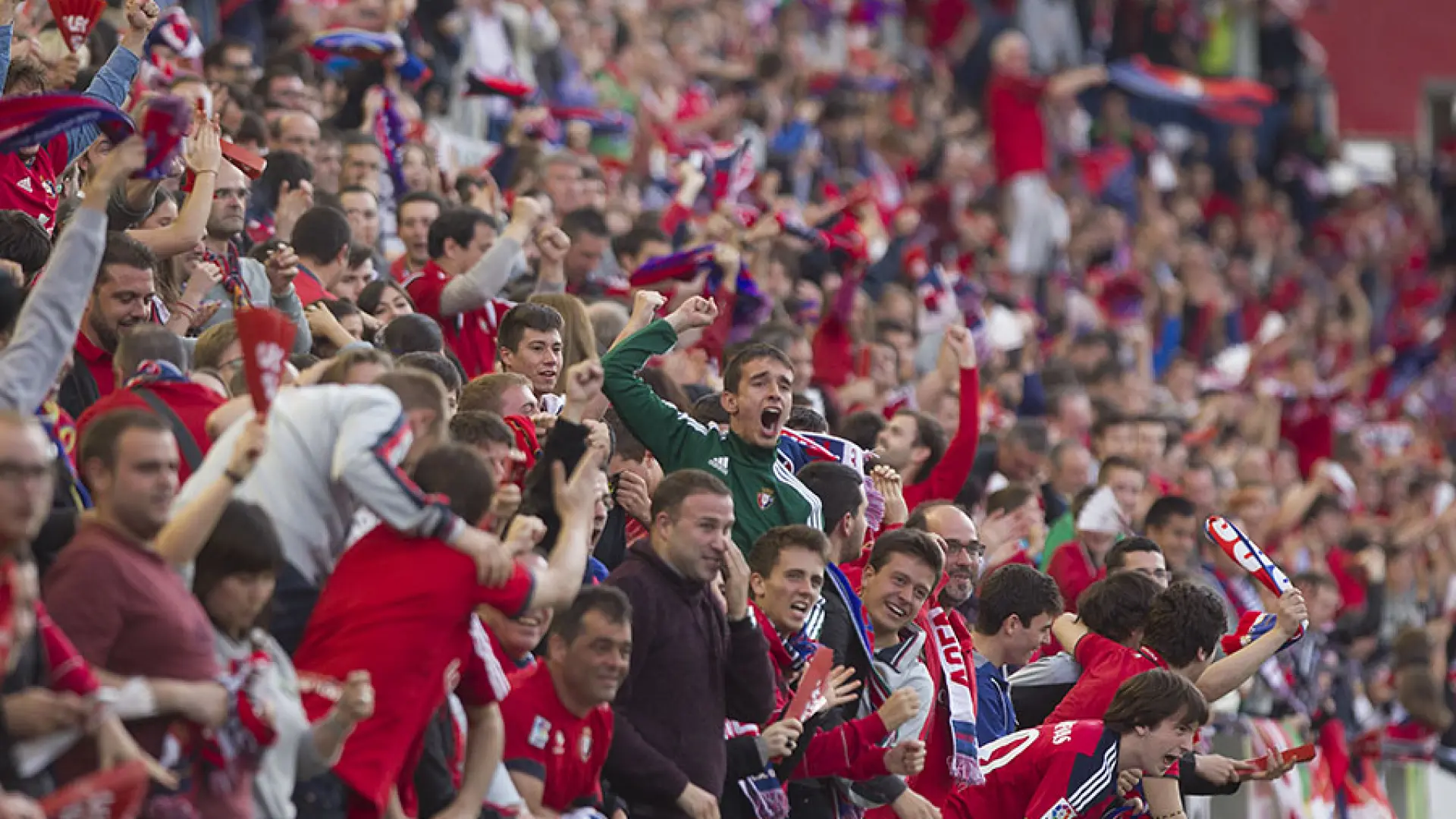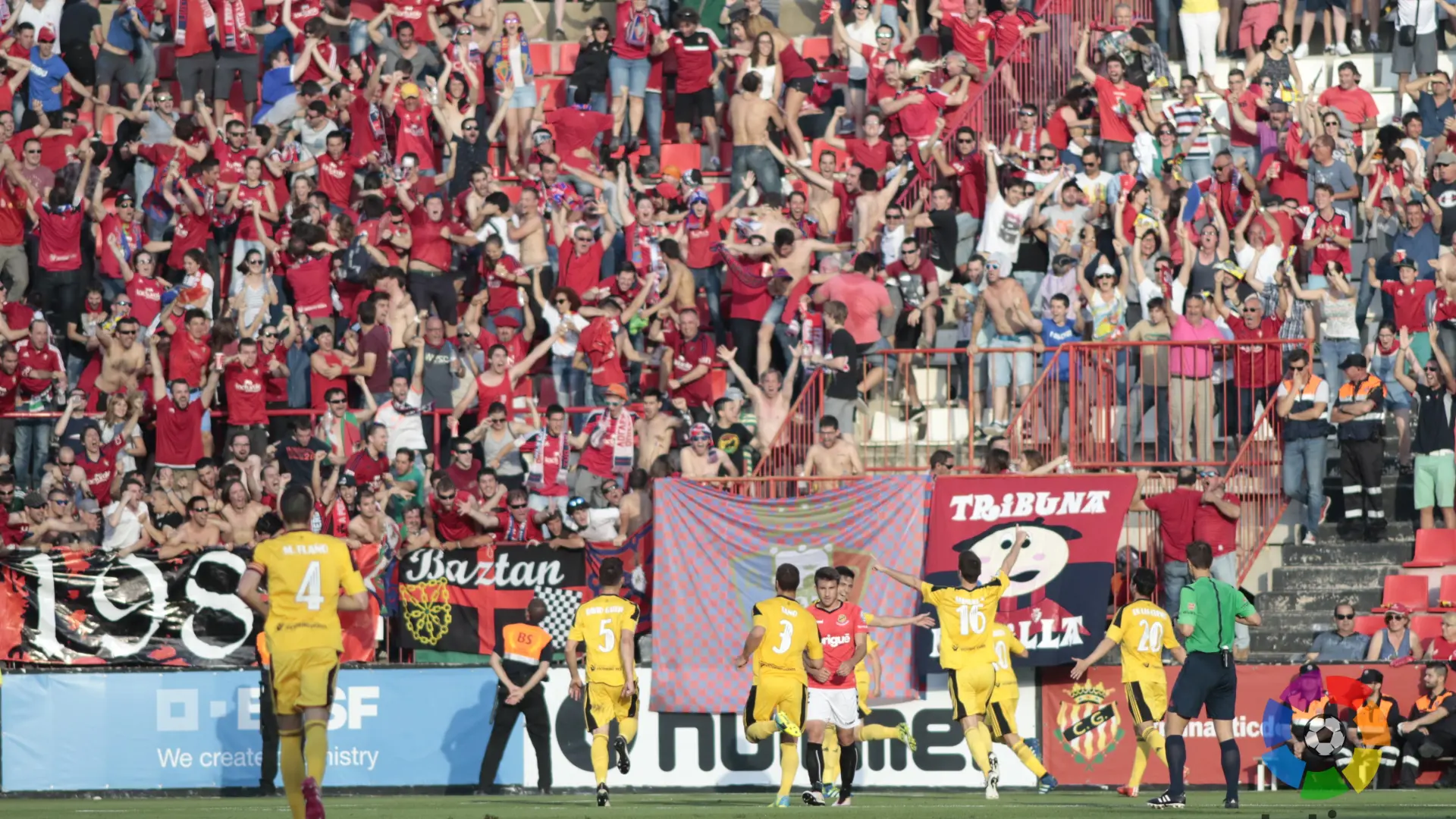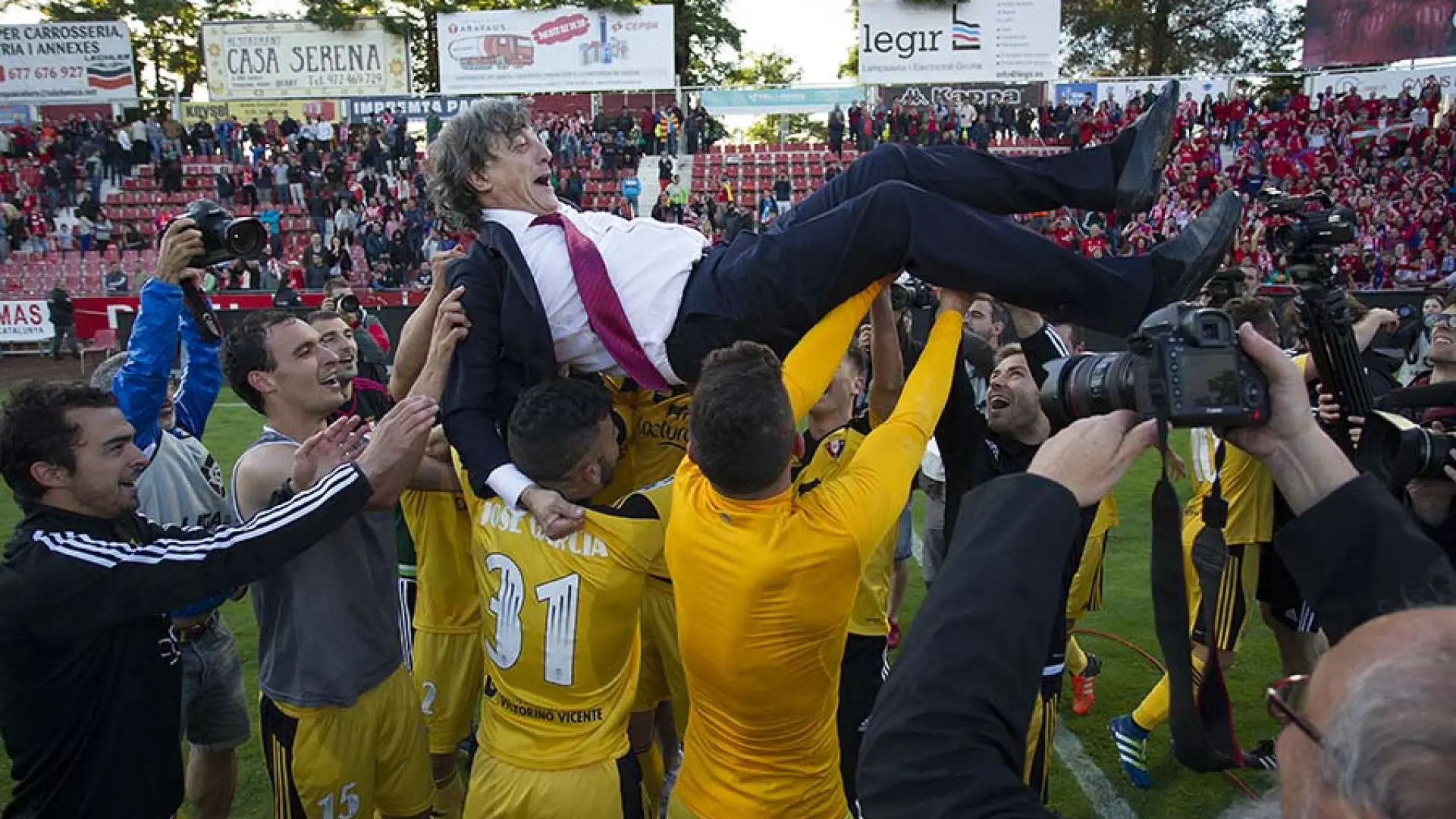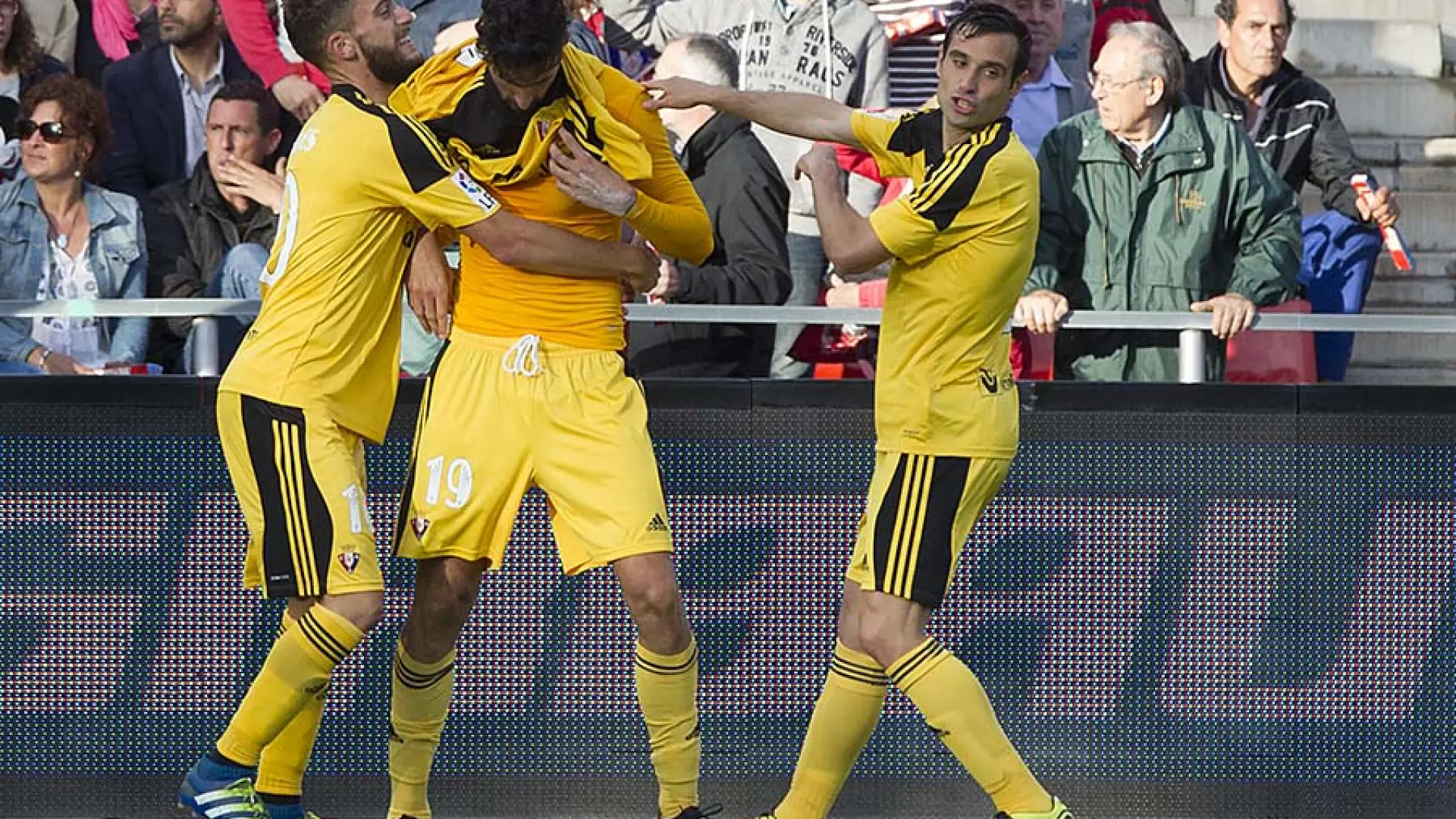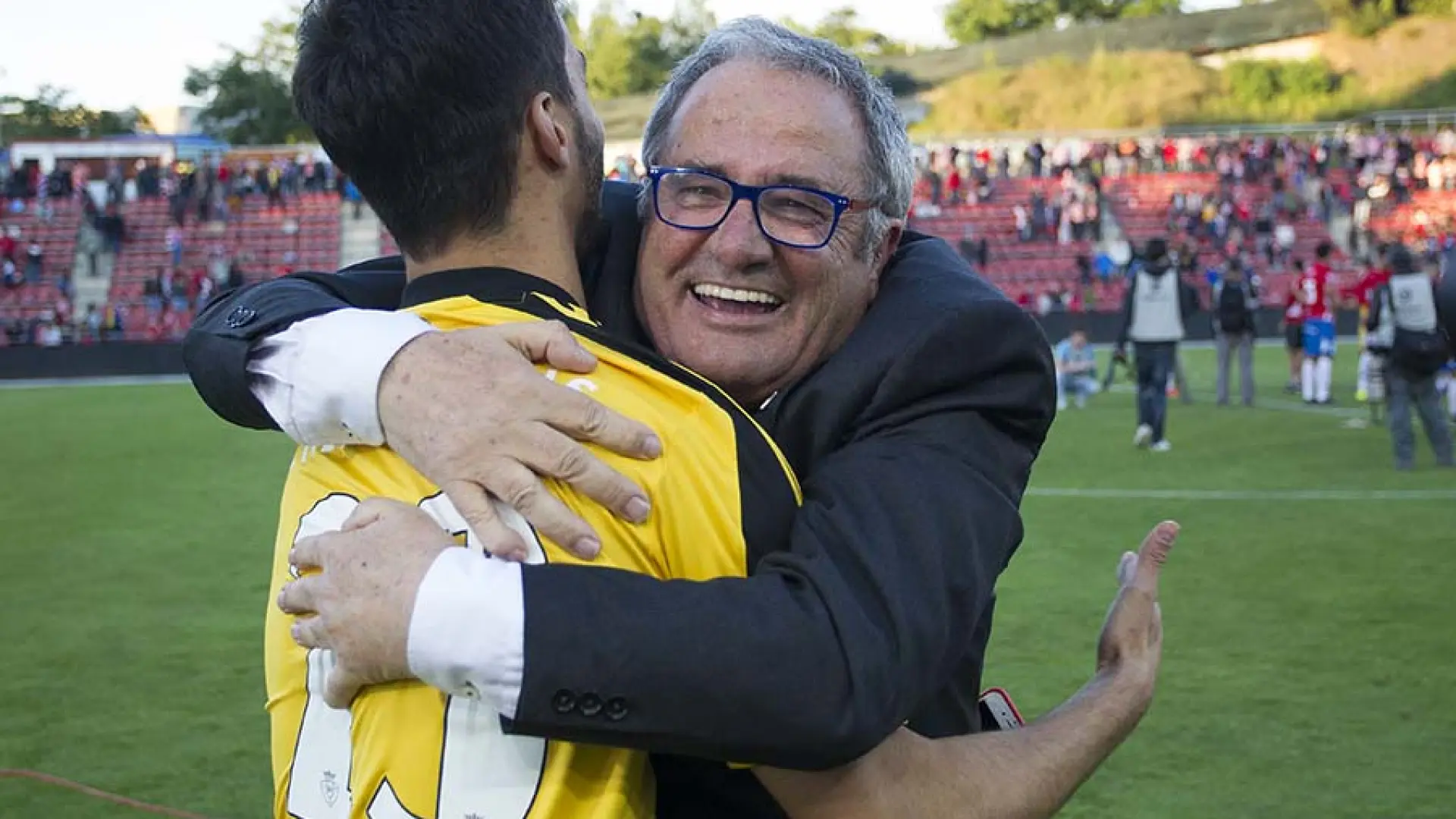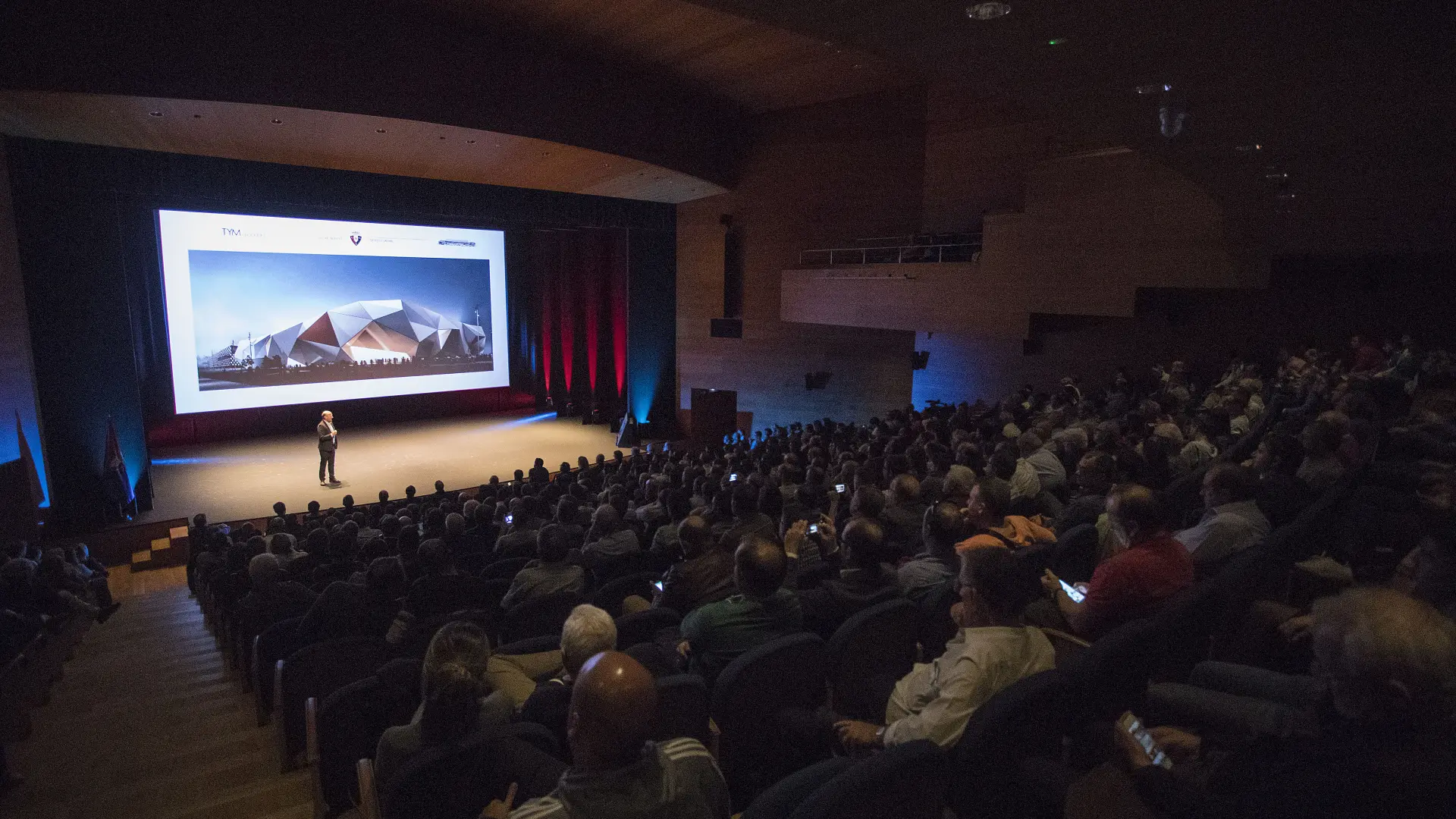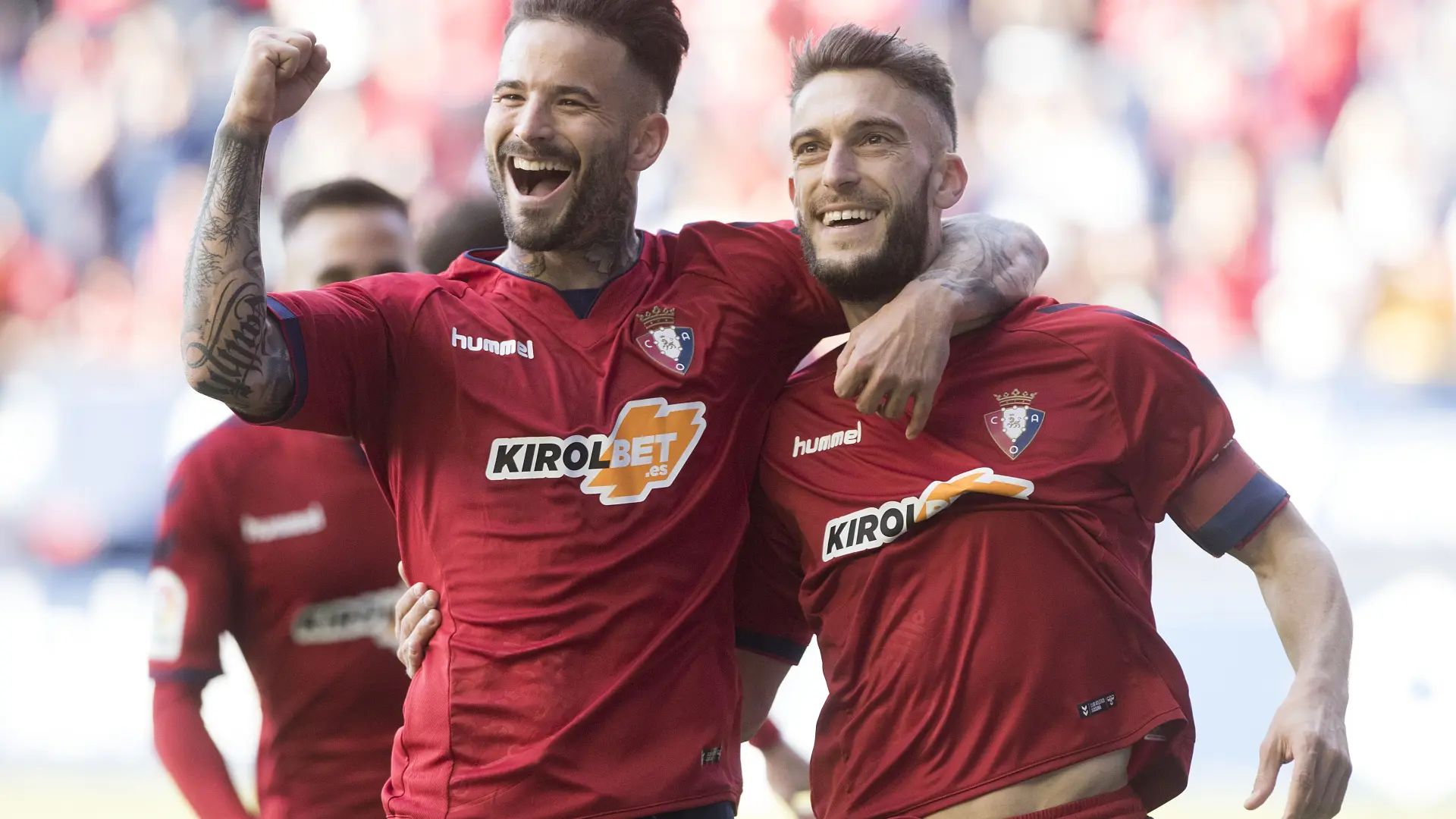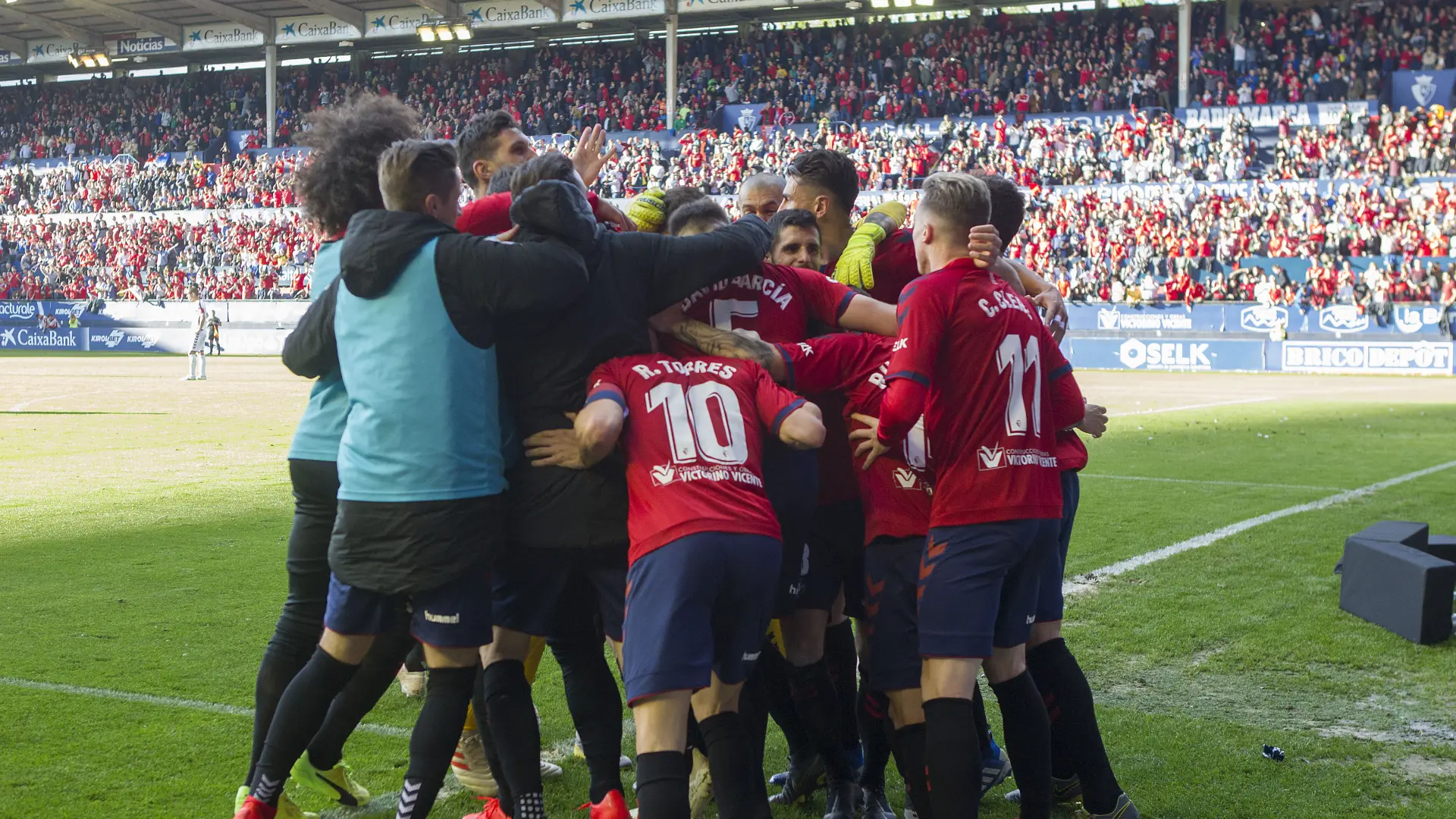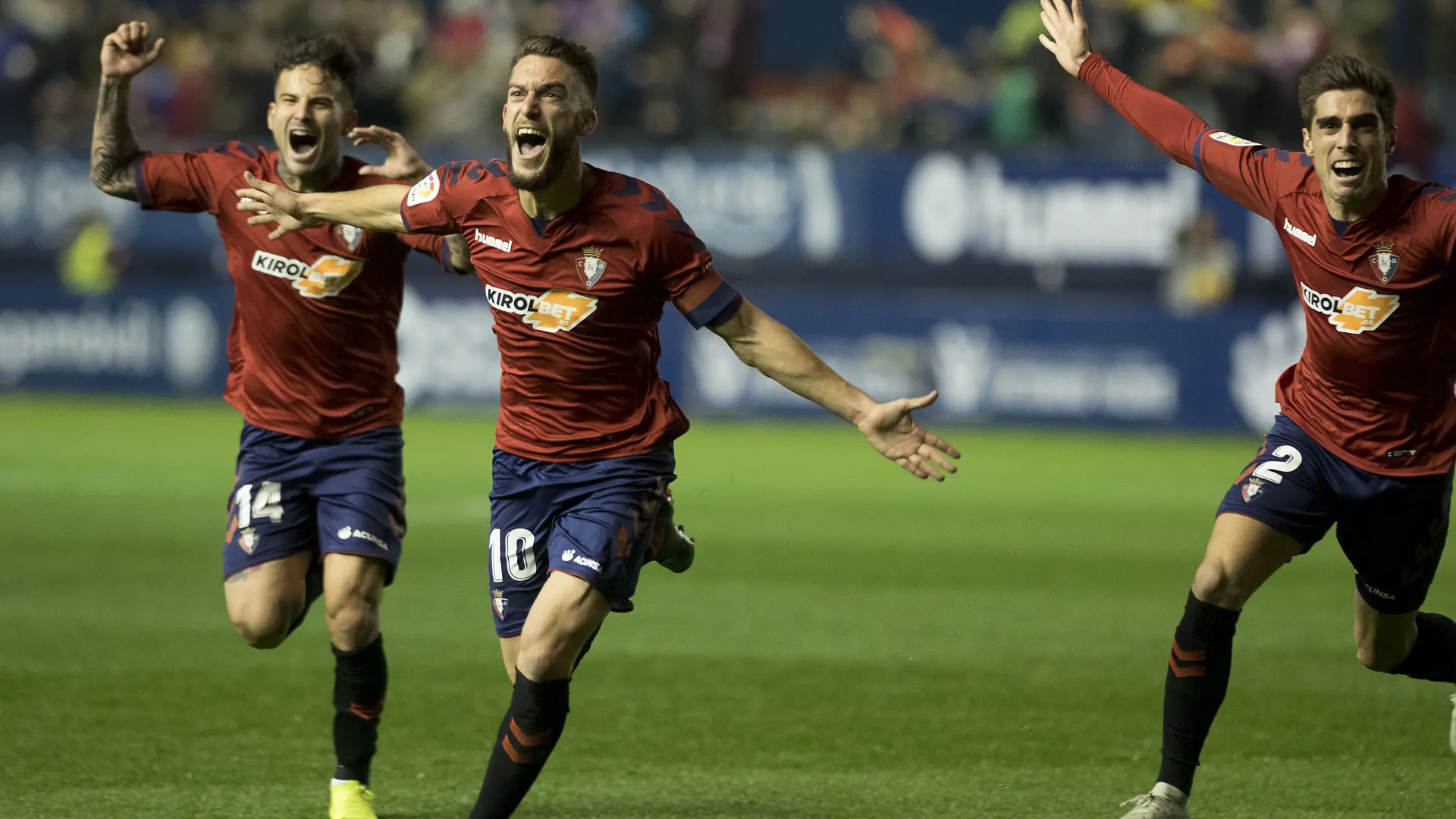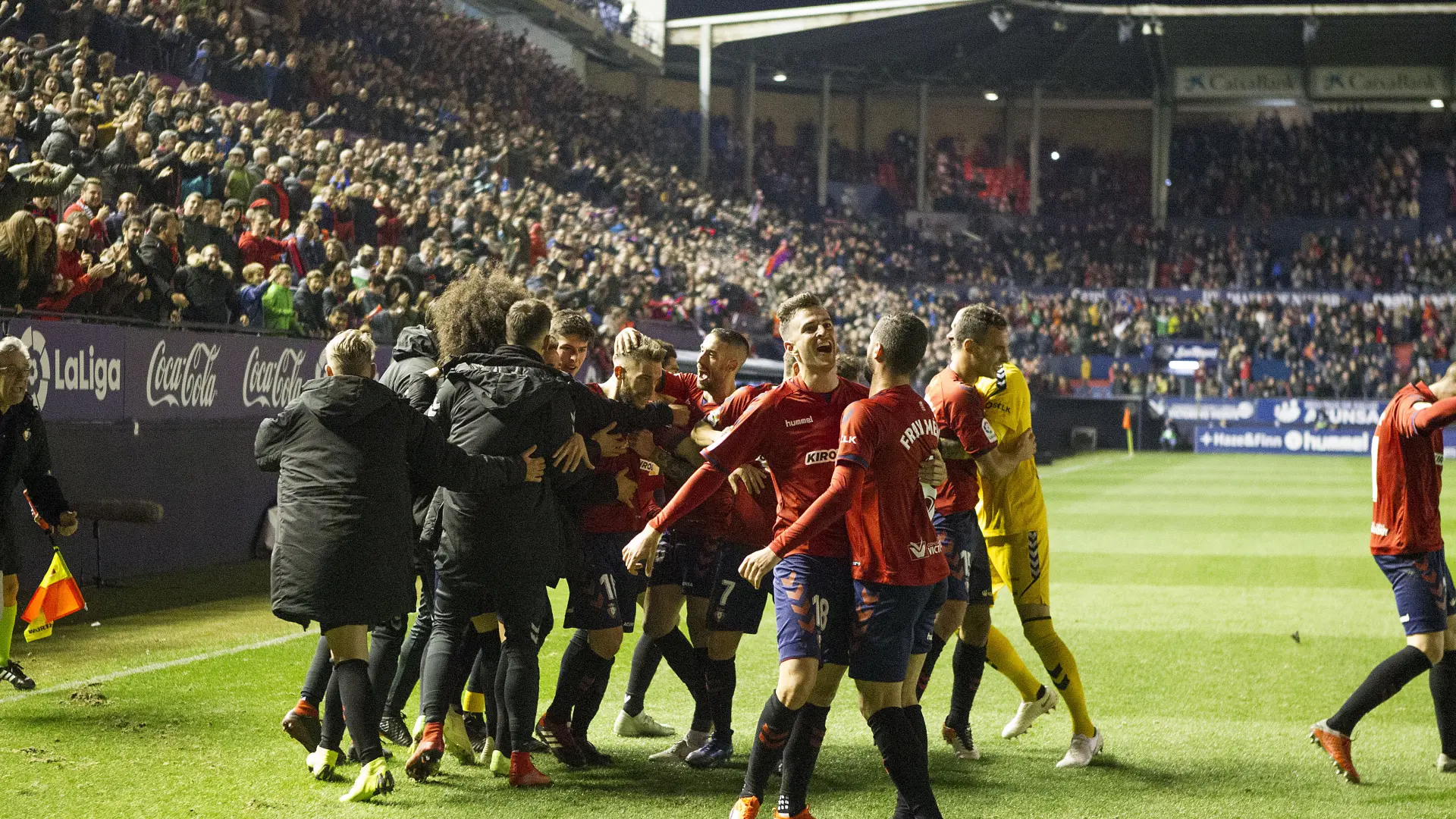2010's
From the 2014 crisis to Sabalza's reconstruction
Although the successes of 2004-2007 were absent, Osasuna began the second decade of the new millennium by remaining above the relegation zone for three consecutive years under the leadership of José Luis Mendilibar. The team had already sold two of its best homegrown players: César Azpilicueta and Nacho Monreal. However, Raúl García returned on loan for the 2011-12 season, scoring 11 goals that helped Los Rojillos come close to European qualification. He was a key player in a squad that included veterans like Patxi Puñal and Javad Nekounam, along with other vital contributors such as Andrés Fernández, Miguel Flaño, Sergio, and Nino.
The 2013-14 season marked a turning point for Osasuna. Miguel Archanco, an important member of the board under Pachi Izco, became president after defeating Javier Zabaleta in the 2012 elections. After just three matches, he dismissed Mendilibar and appointed Javi García as head coach. Ultimately, the season ended with the team being relegated to Segunda División, culminating in the distressing incident of the Graderío Sur (the south end stands) collapsing during the last match against Real Betis, resulting in several injuries, but thankfully, none were serious.

If relegation wasn't painful enough, the following months would prove to be even worse. Burdened by significant debt to the Navarre government, alongside social pressure and lack of internal support, Miguel Archanco stepped down, leading to the formation of a caretaker committee to oversee the club. This committee, led by Javier Zabaleta, guided Osasuna through a challenging period during which the club's professional license was at risk. The Ley Foral was enacted to help restructure the debt, using El Sadar and Tajonar as collateral, a move approved by the club’s General Assembly. In December, a new presidential election was called, marking the beginning of the Luis Sabalza era after Zabaleta withdrew his candidacy.
In his initial months, Sabalza faced significant challenges. In February 2015, the 'Caso Vizcay' scandal erupted. LaLiga discovered an unjustified transfer of 2.4 million euros from the club's bank accounts during Archanco's presidency related to match-fixing allegations involving his General Manager, Ángel Vizcay. Sabalza acted promptly by taking the matter to court, arguing that Osasuna should not be held accountable for the irregular management of its former directors, and the courts ultimately ruled in favor of the club.
Upon taking office in 2014, Sabalza had to deal with the critical financial situation and the 'Caso Vizcay'. Additionally, on the field, Osasuna narrowly avoided relegation from Segunda División against Sabadell in one of the most dramatic matches in club history. The following year, the team returned to Primera División.
On the pitch, conditions were not much better. Due to financial constraints, Osasuna had no more than 18 professional players and was forced to field young talents, resulting in one of the lowest budgets in Segunda División. That season, Jan Urban, José Manuel Mateo, and Enrique Martín managed the team. Martín coached what many consider one of the most crucial matches in club history, as relegation to Segunda B could have severely impacted Osasuna. The team needed at least a point from Sabadell but found itself down 2-0 with 15 minutes remaining. David García reduced the deficit in the 76th minute from a corner, and in another corner, Javi Flaño equalized in the 91st minute, igniting euphoria among the 2,500 Osasuna fans at Sabadell.
In the following year, despite the sanctions imposed by LaLiga, the team aimed to stay in the second tier of Spanish football. However, Osasuna exceeded expectations, creating an epic campaign under coach Martín and featuring a strong generation of homegrown players like Mikel Merino, David García, and Álex Berenguer. A combination of results on the last matchday allowed Los Rojillos to enter the promotion playoffs. During the playoffs, the team impressed by winning every match. They defeated Nàstic de Tarragona in the semifinals (3-1 and 2-3) and faced Girona in the final, ultimately achieving promotion (2-1 and 0-1), highlighted by a memorable goal from Kenan Kodro in Motilivi.
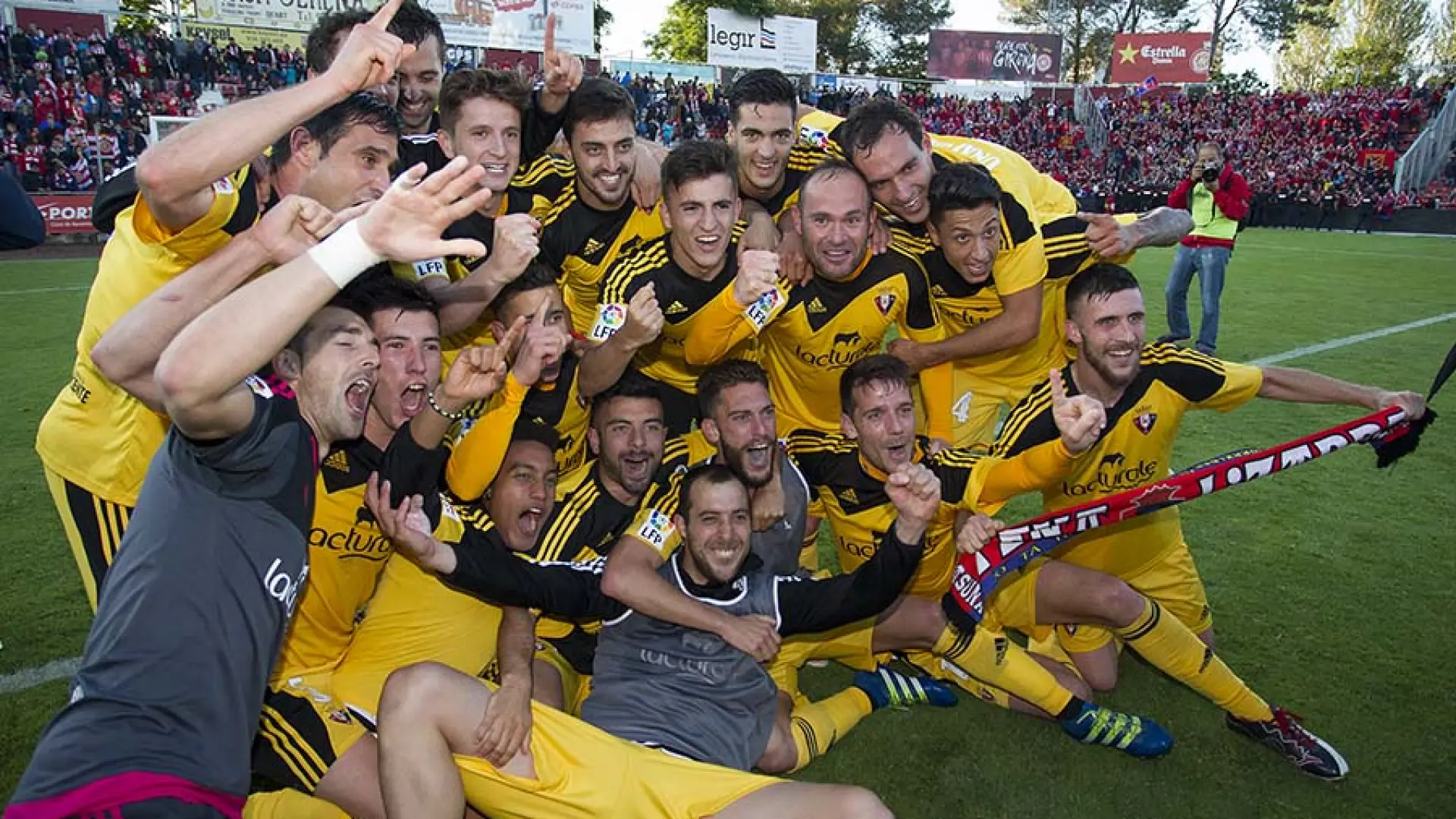
The television rights for Primera División provided much-needed financial relief for Osasuna, which remained in a precarious economic situation, necessitating the transfer of Merino to Borussia Dortmund to help settle debts. On the Sporting front, the 2016-17 season proved to be challenging (with Enrique Martín, Joaquín Caparros, and Petar Vasiljevic taking charge). The level of play in Primera exceeded what Osasuna could afford given their Segunda División budget. However, by June 2017, the club successfully paid off its debt with the Navarre government, including a 7 million euro debt uncovered during a subsequent audit.
Luis Sabalza entrusted Braulio Vázquez with the responsibility of creating a sporting project for the club. Although the team did not achieve promotion in their first attempt during the 2017-18 season under coach Diego Martínez, they succeeded in their second attempt with Jagoba Arrasate as the manager, who would later become a key figure in the club's history. After a challenging decade, the Rojillo fans emerged with renewed hope, as the squad predominantly featured homegrown players such as Oier Sanjurjo, Roberto Torres, David García, and Unai García, alongside international players like Sergio Herrera and Rubén García. Additionally, the club members voted in favor of renovating their stadium, El Sadar, paving the way for a promising future for Osasuna.
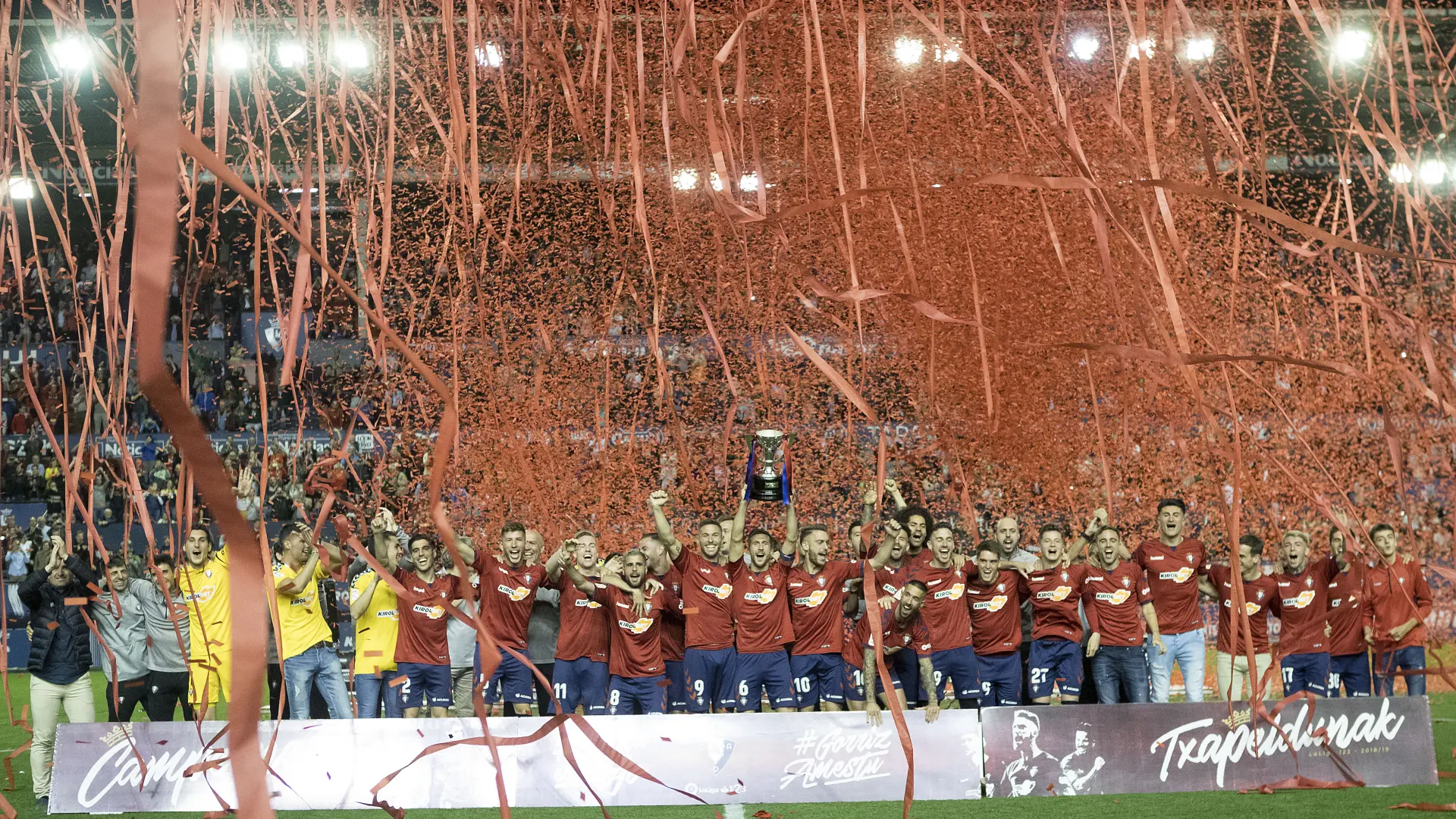
Another notable achievement during this decade was the revival of women's football at Club Atlético Osasuna. The first women's team was established in the 2002-03 season, marking the first of two unsuccessful attempts to create a stable structure. According to the directors at the time, the initiative failed due to financial constraints. After the men's team was relegated in 2014, the women's team disappeared once again. In response, a group of parents founded Mulier. Among the founders was Eva Blanco, who, during Sabalza's presidency, became the first woman to serve on the Osasuna Board of Directors. Following Sabalza’s appointment, Osasuna and Mulier collaborated for two seasons.
In June 2016, the club initiated the creation of its grassroots organization and became the leader of a union of Navarrese clubs. The goal was to establish a framework that would supply players for the women’s team, thereby making football more accessible for girls in Navarre. Competitively, the women's first team, led by Ioseba Sesma, was promoted to the second tier of Spanish football. In the 2018-19 season, Mikel Bakikoa nearly led the team to promotion to the top tier. Notably, in the 50th anniversary year of El Sadar, the stadium opened its doors to the women's team for the first time. On September 9, 2017, Osasuna Femenino played its inaugural match at El Sadar in a league game against Pradejón. Subsequently, on March 10, 2019, over 10,000 fans attended El Sadar to support Las Rojillas as they faced Eibar in the promotional playoffs.
